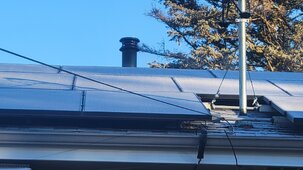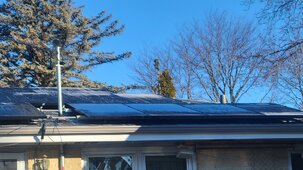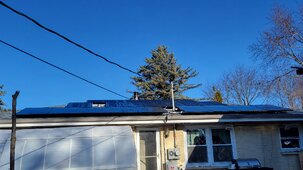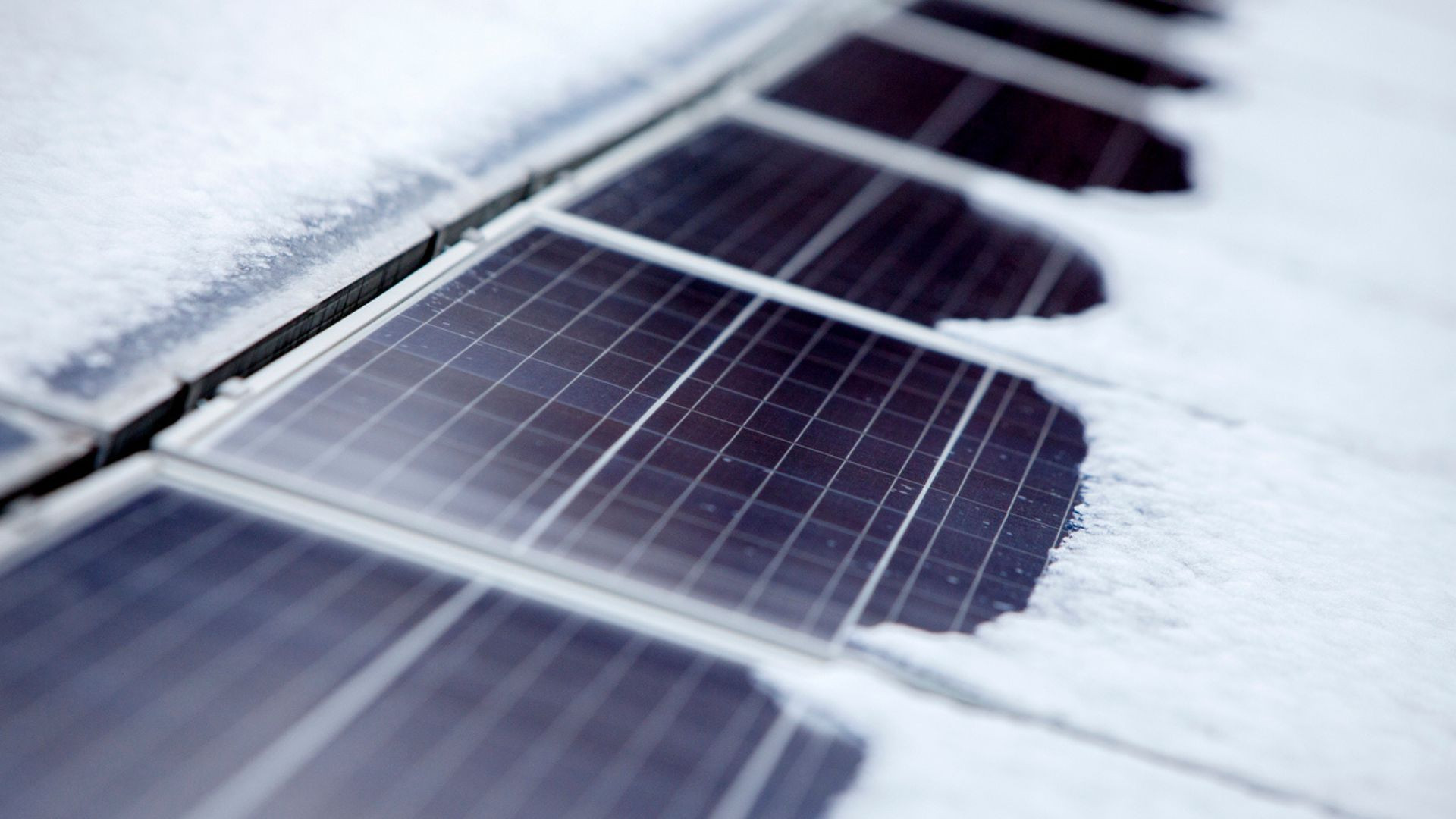Firing up the 240V pipe heaters under the frosty panels this morning showed that my AC wiring to the roof worked great!
However, my wire nut job to the solar heater in the sola-deck only connected 1 of the 3 heating strips successfully. It still gave me enough information to make a conclusion on frost heating. Here it is:





All arrays with full frost cover were producing power. Limiting the discussion to just the heated panels. It was between 100 w and 200 w. I flipped the breaker for the 240 v heaters. Inrush spiked to 10 A and quickly dropped about an amp a second until it settled in at about 2 A, 500 W of draw. The morning temperature low was 28 degrees F.
10 minutes passed and a quick visual inspection showed a nice hold in the ice layer on the panels that were heated. No increase in power output. Another 10 minutes passed and power draw had reduced to about 1.6 A. Not much progress on the ice holes, no increase in power output. Another 10 minutes and the sun had started popping up above the trees. Still no noticeable power increase from the panels and a pretty good-sized hole had developed on the ice that was heated. Draw remained at 1.6 A. Outside temperature had increased to 32 degrees.
Once the sun came above the trees unheated panels went from white to wet really quick. Some outpacing the heated panels. Power output grew from 200 W to 500 W. Another 30 minutes and all panels were completely clear of white. Just wet, 34 degrees and 700 W.
My conclusion, for frost, when the temperature is going to break above freezing early in the morning, just wait for the sun to melt the frost.
Another conclusion was that the power efficiency of the 240 v ice melt strips was much better than the inductive ice king roof melt wires. Sure the inrush power was higher, but that dropped within seconds and then remained lower than the inductive wires.

 interestingengineering.com
interestingengineering.com








